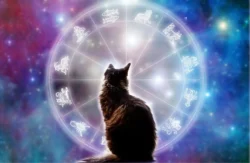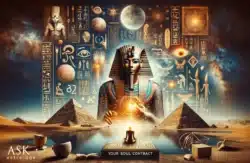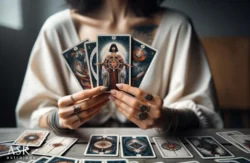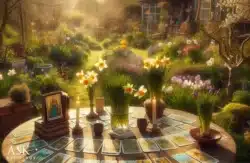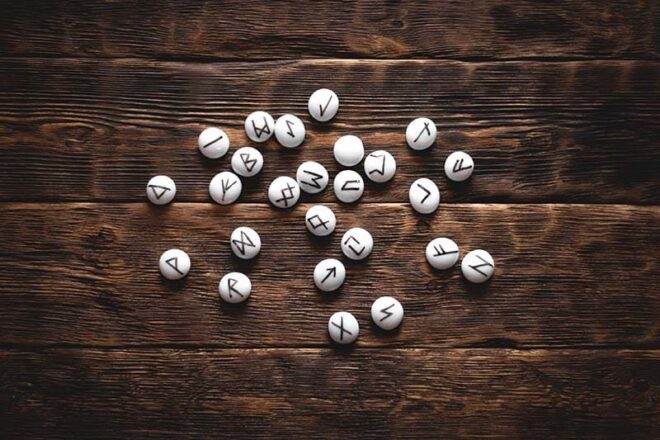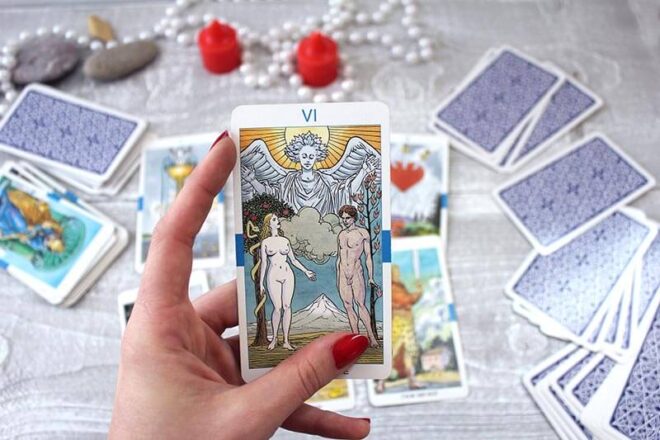The biggest obstacle for many tarot newcomers is learning the meanings of the cards. 78 is a lot of symbols to learn! Who can remember all those meanings? For many, it feels too hard, and they give up before giving the tarot a chance to work its magic for self-discovery and personal awakening.
Please always remember this: You never have to put pressure on yourself to memorize the meanings of the cards. Whether you are brand new to tarot or have been practicing for years, you can always rely on resources to assist you while working with the cards. Feel free to keep a couple of books with your deck and journal and refer to them while using tarot.
Use Your Tarot Resource Guides
I admit, if you are a professional, charging money to read for others, you will need to have a firm understanding of all 78 cards. But if you are reading for yourself, never fear. There is no pressure to memorize anything. Use your tarot resource guides and embrace the spirit of fun as you learn about the cards (and yourself!).
Next after this publicity
The more fun you have, the faster you will make progress and the more profound the results will be. Be patient with yourself and see this as an exciting new adventure.
Tarot Resource Guides for Initial Learning
So how do you learn the cards when you’re starting out? First, use them every day – even just one card – and you will come to see how they relate to yourself and your life. As you do, you’ll assimilate the meanings of the cards into your consciousness. This is how tarot becomes more than a deck of cards; it becomes a personal language.
All Tarot decks come with an instruction book. This is the best resource to go to first to learn the meanings of the 78 cards of the deck you’ve chosen. Some of these books are far better than others. In some cases, they’re brief and offer weak explanations of the cards.
As much as I recommend the Rider Waite (also known as the Smith Waite) to beginners, it’s a little discouraging most editions of this deck include an instruction book that is quite underwhelming.
Other times, however, the book included with the deck is excellent. A few examples of these include the Druid Craft Tarot, the Legacy of the Divine Tarot, and the Wild Unknown Tarot. If you feel drawn to using one of these decks, know that you are getting a bonus with the included guide.
Regardless of how helpful you find the manual, I still recommend getting at least one or two more resources to compare it to. Where do you go next?
Introduction to Tarot Books
There are countless introductory tarot books out there, and I recommend starting with a couple to expand your understanding of the cards’ meanings. New ones are being released all the time, and you can easily find one at your local bookstore.
How do you find the right one? Browse a bit and see which book looks and feels right to you. Don’t overthink it; like with choosing the right deck, choose intuitively and with what feels right. I still consult my beat-up copy of the Tarot Bible by Sarah Bartlett. Other good choices include The Ultimate Guide to Tarot by Liz Dean; Tarot for Yourself, an excellent workbook by Mary Greer; and Tarot Wisdom by esteemed tarot author Rachel Pollack.
There are many other good choices out there. Explore and see what you find.
Companion Books for Digging Deeper
When the time comes, you’ll feel ready to dig deeper. I don’t recommend leaping into advanced books when you’re first learning because it can get a little overwhelming.
If you have a classic popular deck, there are likely books devoted specifically to it written by tarot authorities. These companion books are a recommended source for advancing your tarot studies.
The most popular and influential deck is the Rider Waite, and it’s an excellent choice for your first. But, as mentioned earlier, the included book is weak. Get a “basics” book or two to help you as you learn initially.
Then later consider companion books, including The Pictorial Key to the Tarot by the deck’s cocreator AE Waite.; Llewellyn’s Complete Book of the Rider-Waite-Smith Tarot by Sasha Graham; and Secrets of the Waite-Smith Tarot by Marcus Katz & Tali Goodwin.
There is a wealth of outstanding companion books for other classic decks as well. Find seminal works to accompany the Thoth deck by its creator, Aleister Crowley, and others by Lon Milo Duquette and Angeles Arrien. If you prefer working with a Marseille-style deck, look for influential books by Alejandro Jodorowsky or Yoav Ben-Dov.
Explore, Experiment, and Enjoy!
If you are new to tarot, use a few tarot resources to learn the meanings of the 78 cards. Start with the book that comes with the deck, along with a couple of other introductory books.
Compare and contrast the different keywords and see which resources resonate the most with you. You’ll find that there’s a consensus on the essential meaning of each card.
You will also notice after a while that some authors’ interpretations of the cards are a better match for you than others. That doesn’t necessarily make those writers better than the others; it just means they’re better for you. You’ll be a fan of those writers for life!
Never forget, however, that ultimately YOU are the authority on what the cards mean. Listen for your intuition; it always knows the truth that comes from your own heart. The more you practice, the more you’ll learn to trust your own inner voice.
Don’t overthink.
And yes! Look at a few keywords in your resources and listen for your heart to speak to you. Relax and enjoy!
Even after you’ve become very comfortable using tarot, always look to expand your understanding of the cards. “Experts” can forget this! The 3 of Wands won’t mean the exact same thing next month that it means today. Your understanding of the Magician should expand with each new time it appears.
Tarot is a living, breathing entity. It grows as we do; it expands as our consciousness expands. If you are hoping to have the tarot completely figured out, you’ll close yourself off from learning, and your readings will suffer.
To that point, I still always keep a few guidebooks handy for my daily tarot work. If I gaze at my cards and don’t receive an intuitive message easily, I simply open a book and review the keywords for those cards.
Every time I find that I’ll uncover a word that I hadn’t associated with that card before, or at least for a long while, seeing it will help me get the “Aha!” moment that effective tarot use is all about.
Never forget: There’s nothing wrong with using tarot resource guides to keep learning! It doesn’t reflect poorly on you to use a little help to gain the very best tarot reading you can. No one is grading your paper.
Your willingness to learn will continually increase your intuitive abilities and your tarot knowledge. It’s a gift you receive for the rest of your life.





































